- Administrator
- Albums and Singles
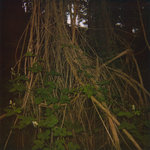
Stanza
Companion piece to Sonnet LP (krank193)
Recorded 3-9 February 2015 at La Berceuse, Seattle WA
with guitar and cassette tape
Original CD edition included with handmade edition of Sonnet, limited to 25 copies, followed by a 2nd run of 10 copies.
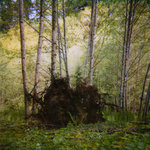
Stanza II
Recorded May 2015 at La Berceuse, Seattle WA
with guitar, magnetic tape and voice
Also coupled with Stanza for release by BARO Records and Beacon Sound (Portland OR) as a C60 cassette, September 15, 2015
More information can be found here.
Read More
- Administrator
- Albums and Singles
Operating out of London’s Cable Street studios, on the vacated docks of empire and in the shadow of Canary Wharf, Moon Zero is the project of producer and composer Tim Garratt. This self-titled debut album is the culmination of the exploratory drone work of his first EPs. Drawing on the micro-polyphony of classical modernism and analogue-leaning contemporary electronic music, it's the finest incarnation yet of an aesthetic that’s both minimal and cinematic: an unhurried, massive tapestry of sound built from minute processes and hidden melodic lines.
The music spools out of Garratt’s mind in the form of extensively screwed up synthesizers, bowed cymbals, liquidated instruments and detuned tape loops. Bounced between effects chains, music software, mixing desks and tape, his materials are then inflated and tampered with, in different venues of a particular significance or suggestive atmosphere. The results are enigmatic, hypnotic and register a note of mourning. They are mercifully free of the obligatory club references of electronic music that’s destined for a different mood but nonetheless confines itself to bygone ‘post-club’ tropes. “I was listening to a lot of William Basinski, Bowie's Low, Swans, Messiaen, Stars of the Lid, Cluster, Eno… Carl Sagan,” remembers Garratt.
Recorded at St George in the East in Shadwell, London, religious themes pervade the album, drones imported from ancient sects and the never-silent industrial era – a convergence that is mirrored by the dead history of the Thames and present-day flows of money and data outside his Limehouse studio.
Out September 25, 2015.
More information will soon be found here.

Read More
- Administrator
- Albums and Singles
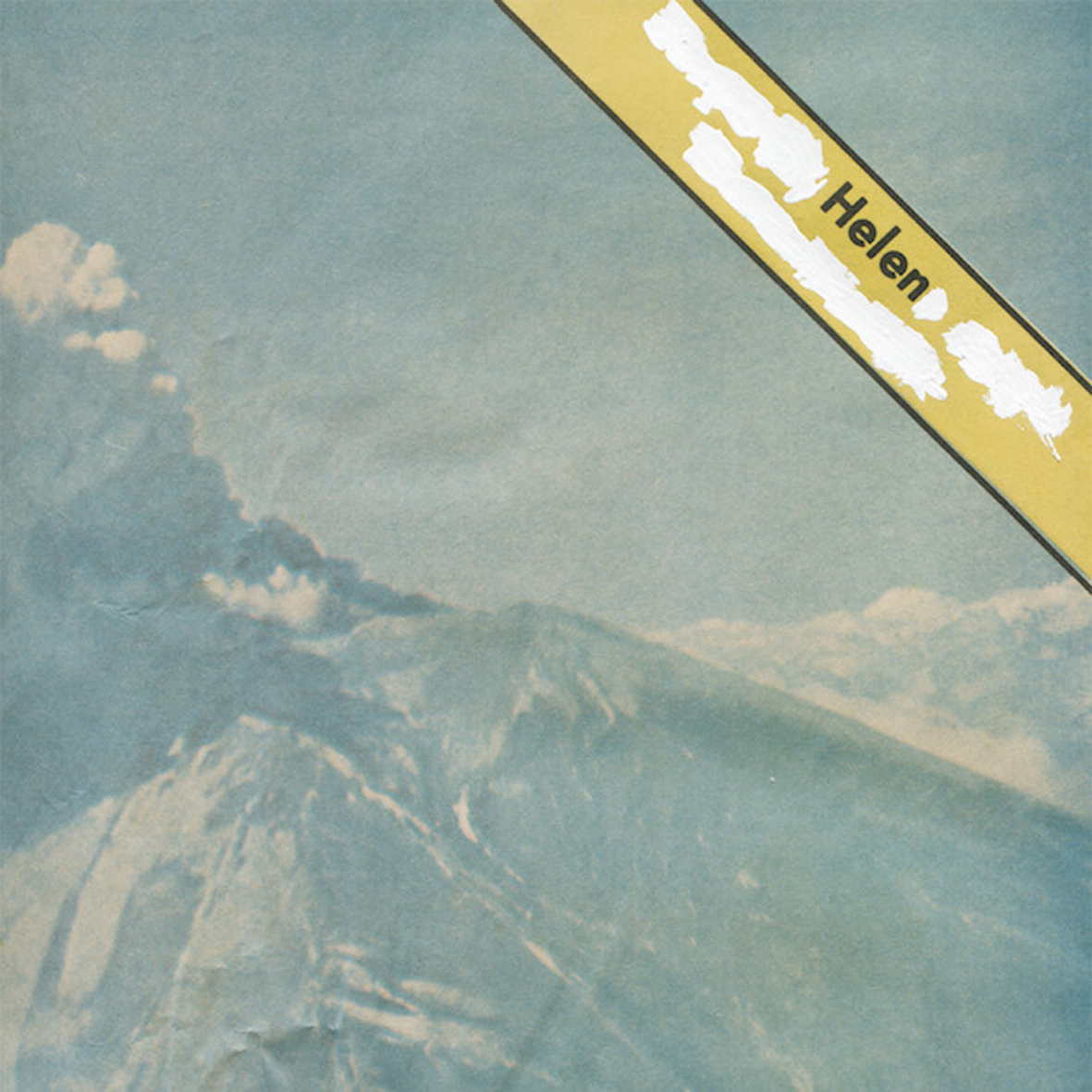 For some reason, this seems to be one of the most weirdly overhyped albums of 2015 (at least in the underground/indie/experimental music spheres that I travel in), suggesting that: 1.) people absolutely cannot get enough Grouper, 2.) people are desperate to find a new album to be excited about, and 3.) widespread cultural amnesia has set in.  That is not a knock on the band though: Liz Harris’s garage/indie-pop trio is certainly enjoyable, but it is disorienting to see such a jangly, pretty, and breezily lightweight affair be so celebrated at a time when no one seems to clamoring to name-drop Tallulah Gosh, Opal, The Shop Assistants, or any similar late '80s/early '90s indie pop bands as major influences (though they totally should be).  In any case, The Original Faces certainly has its appeal–despite being inherently a modest event with very low-key aspirations, it is not every day that I get to hear Harris let down her guard and bash out fun indie-pop confections with her friends (imaginary and otherwise).
For some reason, this seems to be one of the most weirdly overhyped albums of 2015 (at least in the underground/indie/experimental music spheres that I travel in), suggesting that: 1.) people absolutely cannot get enough Grouper, 2.) people are desperate to find a new album to be excited about, and 3.) widespread cultural amnesia has set in.  That is not a knock on the band though: Liz Harris’s garage/indie-pop trio is certainly enjoyable, but it is disorienting to see such a jangly, pretty, and breezily lightweight affair be so celebrated at a time when no one seems to clamoring to name-drop Tallulah Gosh, Opal, The Shop Assistants, or any similar late '80s/early '90s indie pop bands as major influences (though they totally should be).  In any case, The Original Faces certainly has its appeal–despite being inherently a modest event with very low-key aspirations, it is not every day that I get to hear Harris let down her guard and bash out fun indie-pop confections with her friends (imaginary and otherwise).
This is Helen's debut album, though they previously surfaced with a 7" single in 2013 (co-released on Harris's own Yellow Electric imprint and bassist Scott Simmons' Meds label).  Both of the songs from that single reappear here, so those new to the party need not panic.  Rounding out the trio is Eternal Tapestry drummer Jed Bindeman, whom Liz amusingly began playing with several years in an attempted "thrash band" that ultimately became Helen (which is definitely not a thrash band).  Naturally, there is also a seemingly fictitious fourth member ("Helen," of course) credited with backing vocals.
The Original Faces can be divided into roughly two types of songs: fuzzy dream-pop and jangly C86/K Records/Flying Nun-style pop, though the two strains are united by Harris' characteristically reverb-swathed vocals and the rhythm section’s muscular and propulsive pulse.  While some of the dreamier/fuzzier pieces like "Dying All the Time" and "Grace" whip up quite a pedal-stomping guitar squall and lush vocal harmonies abound throughout the album , the bulk of Helen's songs adhere to a very simple "ok- we have a cool bass line, a melody, and some chords for the chorus…1..2..3..GO!" garage rock template.  Consequently, a lot of the songs are quite short and do not offer much in the way of development.  Instead, they offer rawness, spontaneity, and quite a few great hooks.
Unsurprisingly, the best songs are the ones with the best hooks (that is how pop music works, generally), though there is one inspired exception: the gorgeous opening piece "Ryder."  After an opening minute of tape-warped guitar strumming, "Ryder" unexpectedly explodes into something that sounds like the crescendo of a Shangri-Las' hit as produced by Flying Saucer Attack’s David Pearce: an indistinct blur of guitars, tape hiss, and lush, floating vocal harmonies over a roiling backdrop of urgent bass and plenty of crash cymbal.  Lamentably, it only last for about a minute, but it is absolutely wonderful while it lasts. The album's other high-water mark is "Allison," yet another slice of dream-pop bliss.  While it does not stray from the rest of the album in any significant way, it boasts an achingly beautiful chorus, as Harris's descending vocal melody harmonizes into warmly melancholy heaven.  Some of the more sparse and jangly songs are quite good too, particularly "Right Outside" and the bouncy debut single (of sorts) "Covered in Shade."  I am always a sucker for tambourines.
Notably, The Original Faces is the rare album in which all of its flaws can also be perversely read as assets.  For example, the album is only about 30 minutes long and roughly half of its songs clock in around 2 minutes or less.  Those short songs are often the best ones though, as Helen's very limited palette greatly benefits from such a no-frills, "get in, kick ass, then get out" approach.  These 12 pieces may not be particularly substantial, but they compensate by rarely overstaying their welcome. Another potential issue is that Harris's vocals are so soaked in reverb that they basically become just another instrument, completely obscuring the lyrics and undercutting her presence as a vocalist.  It sounds beautiful though, and Simmons and Bindeman do their best to make up for the blurry, barely there haziness of the vocals (the drums and bass are atypically loud and prominent for this style of music).  More importantly, those swooning, woozy vocals are what make this a distinctive project rather than a straight homage: Helen is basically just three cool people with great record collections having a fun time, but they still manage to make their influence-showing party their own thing (and they are every bit as good as most of the bands that they are celebrating).
For what they are: a fun side-project for three friends who are very busy with other bands and activities, Helen are surprisingly good.  Also, the informality of this project is hugely endearing (it took them 4 years to get together a half hour of music and their sole press photo was hurriedly taken with a dying camera after they convened for pizza on a rare occasion where all three members were in the same town at the same time).  Consequently, it is unwise to expect too much from Helen, but they are definitely an easy band to like (and they have excellent taste).  While I probably will not remember much about The Original Faces in a couple months, I will just as likely be endlessly revisiting a few of the highlights on playlists and mixtapes for years.
 
Read More
- Administrator
- Albums and Singles
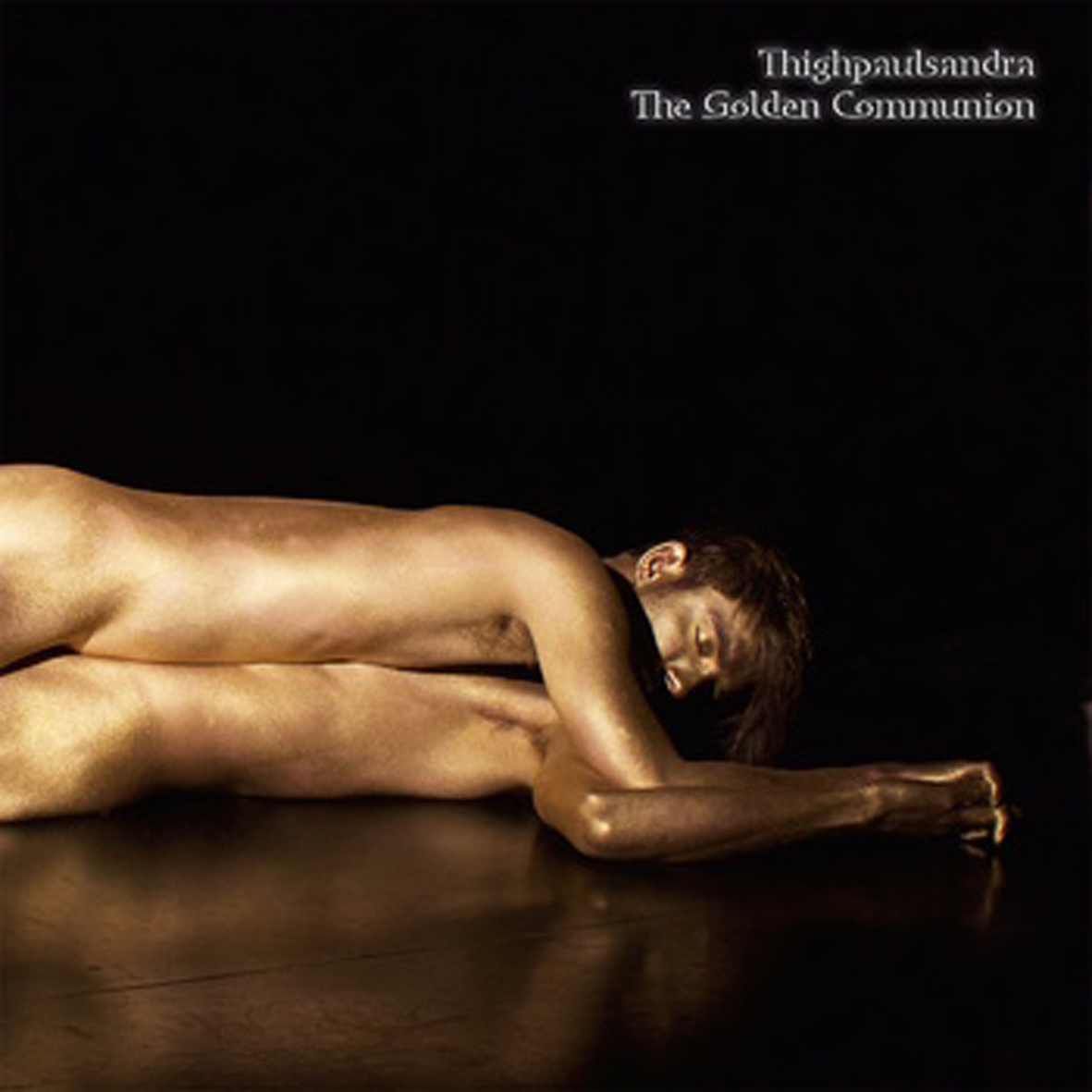 It has been roughly 10 years since Thighpaulsandra’s last solo album, which is notable because it definitely feels like an entire decade-long backlog of ideas has been poured into this sprawling and overstuffed release.  Fits of great inspiration, masterful songcraft, baroque orchestration, meandering filler, and plenty of very ill-conceived motifs all tirelessly vie for their moment in the sun over the course of an exhausting 2-hour tour de force of intermittently wonderful and oft-grueling excess.  The Golden Communion is simultaneously a celebration of the joys of unfettered imagination and the perils of complete creative freedom.  There is probably an absolutely perfect LP buried in here somewhere, but Thighpaulsandra certainly does not make it easy to find.
It has been roughly 10 years since Thighpaulsandra’s last solo album, which is notable because it definitely feels like an entire decade-long backlog of ideas has been poured into this sprawling and overstuffed release.  Fits of great inspiration, masterful songcraft, baroque orchestration, meandering filler, and plenty of very ill-conceived motifs all tirelessly vie for their moment in the sun over the course of an exhausting 2-hour tour de force of intermittently wonderful and oft-grueling excess.  The Golden Communion is simultaneously a celebration of the joys of unfettered imagination and the perils of complete creative freedom.  There is probably an absolutely perfect LP buried in here somewhere, but Thighpaulsandra certainly does not make it easy to find.
The Golden Communion might be single most bizarre and uncategorizable album that I have yet heard in my entire career of music criticism, as it is simultaneously hugely ambitious and absolutely impossible to figure out what exactly Thighpaulsandra was trying to achieve.  This album is all over the place and nearly impossible to categorize.  That said, The Quietus amusingly compared it to an Andrew Lloyd Webber rock musical, which certainly seems apt, if unintentionally cruel.  To me, it feels more like an intended career-defining opus by an artist intent on making a huge statement, yet constantly derailed by multiple-personality disorder, resulting in endless jarring shifts in tone and vision.  I have no idea if that kaleidoscopic aesthetic was by design or not, but Communion nevertheless does feel like the work of several different artists with very different visions.  The personality that I like best (The Sophisticated '80s Pop Visionary) sadly surfaces in earnest just once (in the sinuous and burbling "The Foot Garden").  He does not even manage to turn up for the entire song either, as the piece opens with over 4 minutes of hallucinatory and discordant electronic meandering (the Mad Scientist personality?) before the actual song kicks in.  Once it actually comes together, however, it is absolutely wonderful, resembling the best song that David Sylvian never wrote.
Another one of Thighpaulsandra's more appealing sides is The Pastoral English Psych-Rocker from the Late Sixties, which surfaces in "Valerie."  Following almost 2 minutes of requisite synth noise, the piece suddenly blossoms into a beautifully melodic Beatles-esque piece in the vein of "Eleanor Rigby," but Thighpaulsandra’s restless imagination makes yet another surprise appearance after a few minutes, resulting in a typically wild series of transformations.  First, it explodes into rousing a church choir reprise of the chorus; then sidesteps into a baroque, candy-colored prog-rock synth fantasia; then closes with something that lies somewhere between Sylvian and suave '70s pop a la 10cc.  Each new twist is executed beautifully, but it amounts to a very disorienting (albeit still enjoyable and unique) whole.  Happily, yet another of Thighpaulsandra’s appealing guises is (of course) that of Former Coil Member, which manifests itself in the closing epic "The More I Know Men, The Better I Like Dogs," which culminates in an increasingly chopped loop of John Balance’s recitation of the title.
The rest of The Golden Communion’s ten pieces are a definite mixed bag, however.  The stomping glam rock-meets-industrial rave-up "Did He Fall?" is quite good, for example, offering strong up hooks, ample personality, a fun groove, and wonderfully surreal film dialogue interlude.  Later, "Devil in Every Hedgerow" takes the dark pop sensibility of "The Foot Garden" and gnarls it into an abstract nightmare.  Other highlights includes the brilliantly ruined orchestral crescendo of "The Sinking Stone" and the sultry and subtly psychedelic vamp that erupts during the 25-minute title piece.  Elsewhere, "Salute" bizarrely erupts into a fried-sounding stoner metal groove with questionable results.  Much less questionable is "On The Register," which brings back those same distorted guitars for a legitimately bad and wince-inducingly meat-headed shout-fest (though I was grudgingly amused by the distinctly non-radio-friendly chorus of "You're a fucking pedo!").
While "On The Register" is the only uniformly unfortunate piece on the album, The Golden Communion is nevertheless a deeply flawed opus.  It is also quite a compelling one though.  In fact, my honest and unfiltered opinion can only be summarized as "what the hell just happened?"  The problem is essentially that Communion is a victim of its own insanely ambitious vision and scope, as the album took a decade to finish and features quite a shifting and varied array of collaborators.  In fact, there are more than a dozen credited contributors involved to various degrees, most notably the god Pan, though Peter Christopherson turns up as well.  Also, Thighpaulsandra seems terminally incapable of doing anything succinctly, maddeningly couching all of Communion's best moments amidst plenty of digressions and filler. This album could easily be half as long without anything being missed.  Still, parts of it are legitimately dazzling and sound like absolutely no one else.  Therein lies the proverbial rub: Thighpaulsandra is a restlessly creative supernova, but one who is badly in need of both focus and an editor (or at least a very opinionated foil).  Ultimately, The Golden Communion is absolutely singular in ways both bad and good.  Those looking for something far outside the ordinary will definitely find a lot to like here, but they will likely also find a generous accompanying helping of exasperation.  Proceed with caution.
 
Read More
- Administrator
- Albums and Singles
Hello There,
Michael Gira of Swans here.
I thought that you might be interested to know that the 2xCD live SWANS handmade fundraiser event/portal of support for our (in)glorious efforts is now up at this link. The live 2xCD is called The Gate. I believe it captures the live SWANS experience effectively. The woodblock print is by Nicole Boitos and I draw all over each one and sign it as well. Each one is unique. They're numbered 1 - 2500 and won't be available elsewhere... The upcoming album (as yet untitled) will be the last with this core group (comprised of my beautiful friends Norman, Christoph, Thor, Phil, Christopher and myself) and the subsequent (marathon) tour in 2016 will be our last together. As such, I am determined to make this album the most fully realized, cataclysmic, subtle and nuanced, heartfelt and inspirational, truthful and luminous recording that we have yet undertaken. As always, your valued (and quite necessary) support in this perhaps quixotic endeavor is sincerely appreciated. I love you! I thank you!
- Michael Gira / Swans
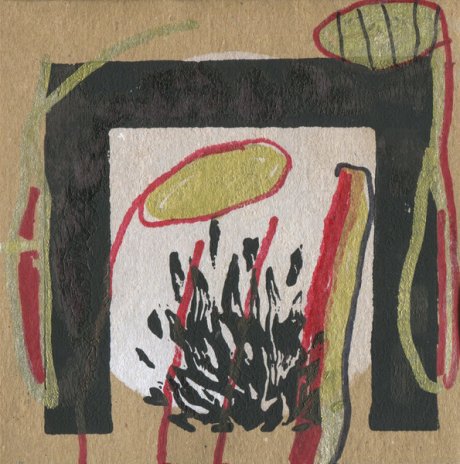
Read More
- Administrator
- Albums and Singles
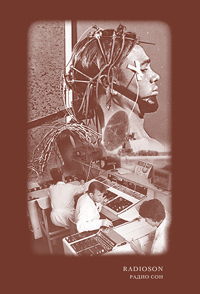 The moniker and title of this debut album from the enigmatic Russian artist translates to "radio sleep", the codename given to a secret USSR project during the Cold War. Much like similar experiments in the USA, it was an attempt by scientists to use radio waves and sound to control and subjugate the masses. Even though I had no idea about any of this for my first listen to this tape (the text describing the background is in Russian, with a URL for an English translation), I got a distinctly sinister feeling just based on the sound: a mix of dissonant textures and subtle, hypnotic melodies that lurk just beneath the surface, making for a multifaceted release that slowly reveals its brilliant secrets.
The moniker and title of this debut album from the enigmatic Russian artist translates to "radio sleep", the codename given to a secret USSR project during the Cold War. Much like similar experiments in the USA, it was an attempt by scientists to use radio waves and sound to control and subjugate the masses. Even though I had no idea about any of this for my first listen to this tape (the text describing the background is in Russian, with a URL for an English translation), I got a distinctly sinister feeling just based on the sound: a mix of dissonant textures and subtle, hypnotic melodies that lurk just beneath the surface, making for a multifaceted release that slowly reveals its brilliant secrets.
Each side of this tape is split into two discernible, but untitled pieces.The first half of the A side begins with a brittle expanse of synthesizer.There is a cold, gray and depressive sound to it, conjuring images of a post apocalyptic wasteland of decaying concrete via its harsh, reverberated ambience.Hints of human voice and static crackle across the mix, isolated and lost.Throughout this darkness and dissonance, a simple melody is blended in.While no doubt intentional, the melody has almost the tone and colors of an alert sound that somehow became musical.
The echoing chaos that ends the first piece sets up the second nicely.Leading off with what best resembles a decrepit, decaying church organ sound, the melodic sound from before reappears, more diverse and varied in its structure, but not as clean and less distinct amongst the noise.Compared to what preceded it, the sound is a bit more static, but the musical part of the piece is more prominent, even if it concludes on a more dissonant, barren note.
On the B side, Radioson crafts a massive expanse of static and hushed, droning tones that are transformed into gliding melodies.The wall of static and noise stays sustained, with a subtle bit of flanging and effects, eventually overtaking the melody, which reappears in a ghostly form at the piece's conclusion.The second part features a heavy bit of raw, distorted synthesizer, mixed with open space and at first a bit more breathing room.Eventually with the introduction of shortwave radio recordings, number reading and alert beacons, it concludes the tape on an unsettling, tense note.
Radioson has brilliantly created an ambience of Cold War era psychological weaponry via raw electronics and unconventional melodies.Captivating from start to finish, there is a sense of malignancy that is pervasive throughout.The cleaner sounds may convey a sense of normalcy and familiarity, but as a whole the work is disconcerting and enigmatic in the best possible ways.
samples:
 
Read More
- Administrator
- Albums and Singles
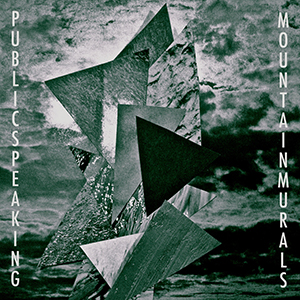 Unlike some of Jason Anthony Harris' previous work as Public Speaking, Mountainmurals is a conscious attempt at specifically creating a "noise" release. Using only a variety of household objects as sound sources (none of which are obvious), the 11 untitled pieces, or at least discernible segments result in a gamut of sounds, some very different but all exceptionally well executed.
Unlike some of Jason Anthony Harris' previous work as Public Speaking, Mountainmurals is a conscious attempt at specifically creating a "noise" release. Using only a variety of household objects as sound sources (none of which are obvious), the 11 untitled pieces, or at least discernible segments result in a gamut of sounds, some very different but all exceptionally well executed.
Whatever instrumentation Harris used to make this tape, a recurring theme on the first half is huge, overdriven percussion that almost resembles a gigantic oil drum.The second piece it makes for the primary sound:all big booming noises run through delays and effects to give it a plethora diversity, but never obscuring the original sound.On the fifth composition, the bassy rumbles are paired with thin, skittering noises that have a semblance of structure, but as a whole it is mostly chaotic and messy.
The metallic, junky sound pops up in the first piece too, cut into what sounds like loops and crunchy distortion.An almost melodic bit of what could be guitar (but likely is not) is weaved in and out, giving a swirling atmosphere to an otherwise lurching outburst of noise.The fourth piece mostly has Harris going balls out noise via that genre prominent but always fun feeling of overdriven crunch.Some sort of musical bit is there, but it sounds like the accidental recording of a far off radio playing as a bulldozer crushes through a field of rocks.
The other side of the tape sees Harris staying closer to a traditional noise sound.The penultimate composition especially has him conjuring a huge blast of dissonance.With all of the distortion and overdrive, the sound resembles that of the best Harsh Noise Wall artists.The sixth piece too is largely cacophonous, but not as oppressive or overwhelming.Thin and brittle static and wet reverb result in a spacy, cosmic bit of noise.The following piece as well is erratic and dissonant, being a cut up pastiche of random sounds, but never too aggressive or forceful.
The two piece combination of the eighth and ninth pieces have a different sense entirely, and one that is distinctly dark.The former is all wet noises and what sounds like menacing bowed instruments.Those swells of ugly noise and what resembles far off conversations makes for a decidedly organic, and disturbing bit of sound.The latter is based on what mostly sounds like forward and backward breathing sounds, but inhuman and uncomfortable.Concluding on bass heavy, noise heavy pseudo-melodies, it has a great creepy vibe to it.
Mountainmurals is a far cry from the weirdly idiosyncratic, song oriented pop of Blanton Ravine, my last experience with Jason Anthony Harris' music.This tape is nowhere near as musical as that album, but still bears his mark of unconventional instrumentation and structures.Of course curiosity had me wondering throughout what exactly was used to make these strange sounds, but the ambiguity made these compositions all the more engaging.
samples:
 
Read More
- Administrator
- Albums and Singles
Forseen years ago by the inclusion of a secret extra pocket in the Far West packaging; Master Musicians have created and brought fourth a painstakingly crafted complimentary LP for synced playback with their 2013 release Far West. With 2 turntables or other playback devices you can playback a fully unique quad experience. Further West shows off deeper journeys into the cave where we can dissolve ourselves.
Further West also stands alone as an inverted yugified universe from the Far West cannon. Liquid synth journeys into the void. We invite you to enjoy it either way.
More information can be found here.

Read More
- Administrator
- Albums and Singles
September 2015 marks the release of Stephen O’Malley’s Eternelle Idole (SP060), long-awaited documentation of the score of Paris-based choreographer Gisèle Vienne's eponymous artistic ice skating choreographic piece of the same name.
Composed of 47 minutes of music spread over 2 vinyls and enhanced by a elegant and chilling photoset by Estelle Hanania, the record features some - familiar - O’Malley collaborators such as Steve Moore, Daniel O'Sullivan, Peter Rehberg, Jesse Sykes, Bill Herzog & Randall Dunn.
Recorded between Brest (FR), Seattle (USA), and Rotterdam (NL), the score sees Stephen O’Malley taking several creative detours, utilizing modular synthesizers and programming as key elements for much of the composition. And while a 3 minutes hole will extract the music from any temporality, emerging eerie phrases of keyboards and piano draw a white monochrome stage for a young girl’s stark and emotive elegy.
Not to worry then… clavichord and guitars weave the darkness, supported by Jesse Sykes prophetical voice, summoning the utter walls of the threats from the external world.
Mirroring the music score, Estelle Hanania presents 16 photographs from the choreographic piece, enlightening how much ice-skating can be about grace and sustain, geometry, telemetry, distance and perfection, as well as possible falls, gloomy shadows.
Metal against ice, tights and knots, spirals and scratches, shouts and winds : field recordings mold a crispy atmosphere while instruments draws some ovals shapes such as lakes, ice skating ring, cosmos belt… and a terrestrial cloud passage and eventual landing platform for a flying saucer.
More information can be found here.

Read More
- Administrator
- Albums and Singles
“In our 20+ years of writing songs, I’ve learned that no matter how escapist, divergent, or even transcendent the creative process feels, the result is more beholden to what is going on at the moment. It’s hard to admit that one is so influenced by what is in front of us. Doesn’t it come from something magical and far away? No, it comes from here. It comes from now. I’m not going to tell you what this record is about because I have too much respect for that moment when you come to know it for yourself.”
— Alan Sparhawk, Low
Co-produced by Low and engineer BJ Burton at Justin Vernon’s April Base Studios in Eau Claire, WI, Ones and Sixes is the new (and, so far, the best) album from the Duluth-based trio of Alan Sparhawk, Mimi Parker and Steve Garrington.
More information can be found here.

Read More
- Administrator
- Albums and Singles
***
He strode towards a long drink.
Running in the gutter,
scanning patterns.
Skin staring, stirring unbelief.
Scarred metal faces
on the iron streets,
spitting blood.
***
Samples and similarly cryptic information can be found here.

Read More

